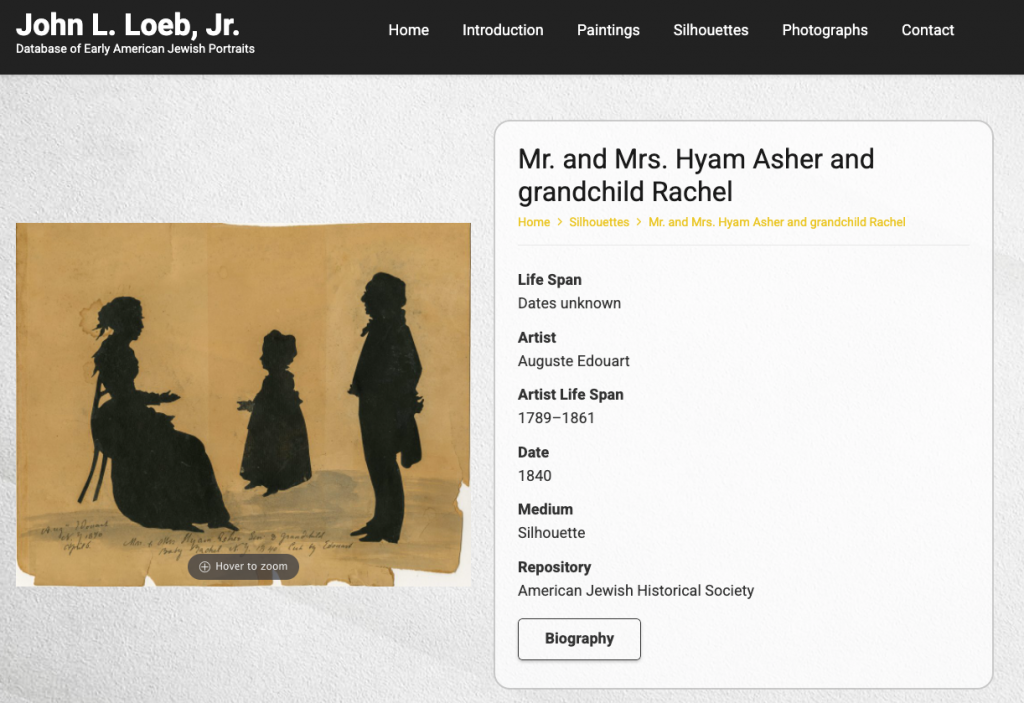The purpose of this tutorial is to help you learn what kinds of questions scholars ask about images of early American Jews and what kind of evidence those portraits provide.
Choose an Image
The Loeb Jewish Portrait Database contains portraits made of American Jews between 1720-1883. Explore the archive and pick an image that interests you. Take some notes about what you see and why you choose that image
Gather Information
All items in the Loeb portrait database have basic information about the work, and some contain detailed biographies of the person presented. As you start to look make sure you can answer who, what, when, where, and why?
Let’s take as an example this charming silhouette found both on the website of American Jewish Historical Society and the Loeb Portrait Database.

Notice that answering “why” was much harder. In order to figure out why the portrait was made, it helps to know something about the type of portrait and how they were used.
Understanding the Genre
The Loeb Jewish Portrait Database contains portraits made of American Jews between 1720-1883 and features three main kinds of images: Paintings, Silhouettes, and Photographs.
These genres of portraiture each carry their own message about the person presented. Silhouettes and Photographs, for example, tended to be much cheaper to have made and hence often a wider range of Jews from different classes than either ivory miniatures or large-size paintings. Because of the cheapness of silhouettes and photographs, they are also more likely to include children.
In addition, each of the genres was more popular in different eras. Paintings, for example, were used across the entire era, while silhouettes in the collection were only made between 1810-1865, and photographs didn’t appear until 1840. Ivory miniatures became less popular as arranged marriages fell out of fashion and silhouettes became an easier way to have portraits made. Likewise once Daguerreotypes, a cheap, early form of photography, became widely available in the late 1840s, silhouettes became less popular. After figuring out what type of genre your chosen portrait falls in, click on any of the link below get started learning more about how to read portraits made in that genre.
